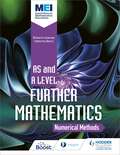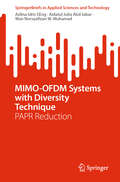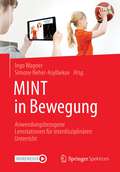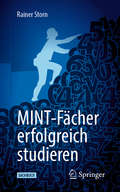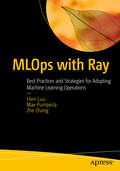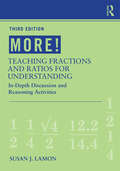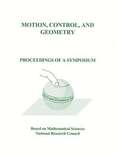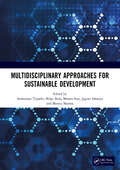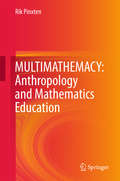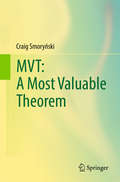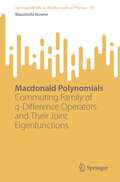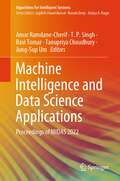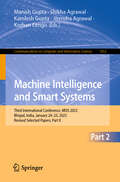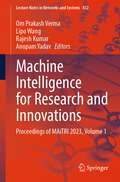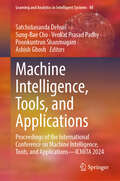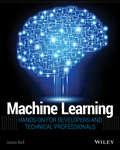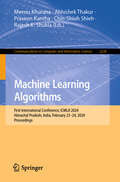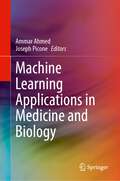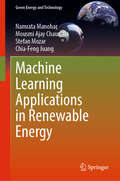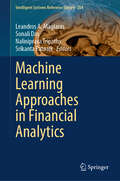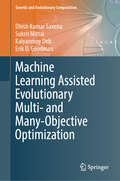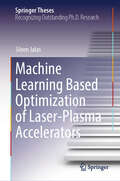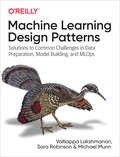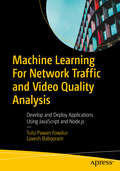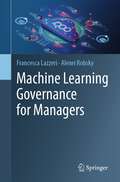- Table View
- List View
MEI Further Maths: Numerical Methods
by Richard LissamanDevelop a deeper understanding of mathematical concepts and their applications with new and updated editions from our bestselling series.- Build connections between topics using real-world contexts that develop mathematical modelling skills, thus providing your students with a fuller and more coherent understanding of mathematical concepts.- Develop fluency in problem-solving, proof and modelling with plenty of questions and well-structured exercises.- Overcome misconceptions and develop mathematical insight with annotated worked examples.- Enhance understanding and map your progress with graduated exercises that support you at every stage of your learning.
MIMO-OFDM Systems with Diversity Technique: PAPR Reduction (SpringerBriefs in Applied Sciences and Technology)
by Azlina Idris CEng Aidatul Julia Jabar Wan Norsyafizan MuhamadThis book addresses the challenges in wireless communication, particularly focusing on the high Peak-to-Average Power Ratio (PAPR) in MIMO-OFDM systems. As the demand for high-speed, reliable wireless communication continues to evolve, this book provides an in-depth exploration of Orthogonal Frequency Division Multiplexing (OFDM) and Multiple Input Multiple Output (MIMO) technologies, which are essential for modern telecommunications. Readers will find particular interest in the innovative PAPR reduction techniques discussed, which are categorized into signal distortion, coding, and probabilistic methods. These techniques not only aim to mitigate the PAPR issue but also enhance the overall efficiency of wireless systems. The book includes various illustrations, tables, and a structured improving approach, making complex concepts accessible and engaging. The main benefit for readers is the practical application of these techniques, which can lead to improved performance in wireless networks, particularly for telecommunications companies in search of optimizing the systems. This book serves as a valuable resource for researchers and practitioners, providing insights into the latest advancements in PAPR reduction and its implications for future wireless communication technologies.
MINT in Bewegung: Anwendungsbezogene Lernstationen für interdisziplinären Unterricht
by Ingo Wagner Simone Neher-AsylbekovFür viele Herausforderungen der modernen Gesellschaft ist ein vernetztes und fachübergreifendes Denken notwendig. Damit Referendar*innen und Lehrkräfte diese fachübergreifende Denkweise besser in den Unterricht einbringen können, werden in diesem Buch 13 umfangreich aufbereitete und interdisziplinäre Lerneinheiten vorgestellt.Sie ermöglichen einen innovativen Zugang durch die Verknüpfung von MINT-Inhalten (Mathematik, Informatik, Naturwissenschaften und Technik) mit sportlichen Bewegungen, die die Lernenden am eigenen Körper direkt erfahren können. Hierfür sind die Lerneinheiten in Stationen organisiert und enthalten fundierte Sachanalysen. Zudem werden ausführliche didaktische Hintergründe, wie z. B. antizipierte Ergebnisse, mögliche Probleme und Differenzierungsoptionen, bereitgestellt. Zusätzliche Materialien, wie beispielsweise Lösungsblätter, sind ergänzend kostenlos online abrufbar. Die Lerneinheiten stammen aus dem Schülerlabor „MINT in Bewegung“ am Karlsruher Institut für Technologie (KIT) und bereichern den Unterricht durch spannende Versuche sowie praktisches Arbeiten mit naturwissenschaftlichen Methoden und Messgeräten. Sie eignen sich für Schüler*innen der Sekundarstufe 1 aller Schulformen. Für Lehrkräfte ergibt sich hierdurch eine innovative Möglichkeit, traditionelle Lehrmethoden um neue Perspektiven zu erweitern.
MINT-Fächer erfolgreich studieren
by Rainer StornSie haben vor, ein MINT-Fach zu studieren und dabei das bestmögliche Ergebnis für Ihren Einsatz zu bekommen? Dann erfahren Sie hier, wie die richtigen Verhaltensweisen, Lernstrategien und organisatorischen Feinheiten Ihr Studienergebnis verbessern können, indem Sie die richtigen Dinge tun und keine Energie auf Unnötiges verschwenden. Lernen Sie:Was Sie tun müssen, wenn Sie in der Vorlesung abgehängt werdenWie Sie optimal lernen und das nötige Wissen effizient in Ihrem Gedächtnis verankernWie Sie sich strategisch auf eine Prüfung vorbereiten, so wie ein Spitzensportler auf die MeisterschaftWie Sie in der Prüfung die Nervosität dämpfen und die Prüfungszeit am effizientesten nutzenWie Sie Ihre Abschlussarbeit systematisch zu guter Qualität führenWie Sie Ihre Arbeit interessant und überzeugend präsentierenUnd welche Dinge im Vorstellungsgespräch besonders wichtig sind Dieses Buch wird Ihnen nicht nur helfen, Ihr Studium so effizient wie möglich zu gestalten. Es zeigt Ihnen auch zahlreiche Vorgehensweisen, die während Ihrer gesamten beruflichen Laufbahn wichtig sein werden und in vielen Fällen für Ihren Erfolg sogar unabdingbar sind.
MLOps with Ray: Best Practices and Strategies for Adopting Machine Learning Operations
by Max Pumperla Zhe Zhang Hien LuuUnderstand how to use MLOps as an engineering discipline to help with the challenges of bringing machine learning models to production quickly and consistently. This book will help companies worldwide to adopt and incorporate machine learning into their processes and products to improve their competitiveness. The book delves into this engineering discipline's aspects and components and explores best practices and case studies. Adopting MLOps requires a sound strategy, which the book's early chapters cover in detail. The book also discusses the infrastructure and best practices of Feature Engineering, Model Training, Model Serving, and Machine Learning Observability. Ray, the open source project that provides a unified framework and libraries to scale machine learning workload and the Python application, is introduced, and you will see how it fits into the MLOps technical stack. This book is intended for machine learning practitioners, such as machine learning engineers, and data scientists, who wish to help their company by adopting, building maps, and practicing MLOps. What You'll Learn Gain an understanding of the MLOps discipline Know the MLOps technical stack and its components Get familiar with the MLOps adoption strategy Understand feature engineering Who This Book Is For Machine learning practitioners, data scientists, and software engineers who are focusing on building machine learning systems and infrastructure to bring ML models to production
MORE! Teaching Fractions and Ratios for Understanding: In-Depth Discussion and Reasoning Activities
by Susan J. LamonMore is not an answer key but a resource that provides the scaffolding for the groundbreaking approach to fraction and ratio instruction presented in its companion text, Teaching Fractions and Ratios. Keeping the focus on the reasoning needed to properly understand and teach rational numbers, More shows teachers how to engage in powerful ways of thinking so that they can, in turn, enhance the mathematical education of their students. Like its companion text, More has been heavily expanded and reorganized, including even more student work, templates for key manipulatives, and an emphasis on applications to everyday life. Based on the content chapters in Teaching Fractions and Ratios, each chapter includes: In-depth Discussions of selected problems and their solutions. Supplementary Activities and a collection of challenging problems involving fractions. Praxis Preparation Questions geared to the content of each chapter.
MOTION, CONTROL, AND GEOMETRY: Proceedings of a Symposium
by Board on Mathematical SciencesProceedings of a Symposium on Motion, Control, and Geometry
MULTIDISCIPLINARY APPROACHES FOR SUSTAINABLE DEVELOPMENT: International Conference on MULTIDISCIPLINARY APPROACHES FOR SUSTAINABLE DEVELOPMENT IN SCIENCE & TECHNOLOGY
by Monica Sharma Shilpi Birla Anshuman Tripathi Jagrati Sahariya Mamta SoniIn a world where the pace of technological advancement continues to accelerate, the imperative to ensure sustainable development has never been more pressing to address the same, the 1st International Conference on Multidisciplinary Approaches for Sustainable Development in Science & Technology (MASDST - 2024), took place at Manipal University Jaipur, Rajasthan, India, from 28th to 29th March 2024. Embracing the spirit of innovation and collaboration, this conference marks a significant milestone in the pursuit of sustainable solutions for our global challenges.
MULTIMATHEMACY: Anthropology and Mathematics Education
by Rik PinxtenThis book defends that math education should systematically start out from the diverse out-of-school knowledge of children and develop trajectories from there to the Academic Mathematics tower of knowledge. Learning theories of the sociocultural school (Vygotsky and on) are used here, and ethnographic knowledge from around the world is shown to offer a rich and varied base for curricula. The book takes a political stand against the exclusively western focus in OECD analyses and proposals on math education. This book aimsat agents in education and social actions in every cultural environment. But itis also attractive to mathematicians, anthropologists and other specialists. Itoffers a broad and scholarly view of knowledge and culture and a veryoriginal transcultural and transdisciplinarian approach to education. Ubiratan D'Ambrosio, UNICAMP/Universidade Estadual de Campinas, Brazil
MVT: A Most Valuable Theorem
by Craig SmorynskiThis book is about the rise and supposed fall of the mean value theorem. It discusses the evolution of the theorem and the concepts behind it, how the theorem relates to other fundamental results in calculus, and modern re-evaluations of its role in the standard calculus course. The mean value theorem is one of the central results of calculus. It was called "the fundamental theorem of the differential calculus" because of its power to provide simple and rigorous proofs of basic results encountered in a first-year course in calculus. In mathematical terms, the book is a thorough treatment of this theorem and some related results in the field; in historical terms, it is not a history of calculus or mathematics, but a case study in both. MVT: A Most Valuable Theorem is aimed at those who teach calculus, especially those setting out to do so for the first time. It is also accessible to anyone who has finished the first semester of the standard course in the subject and will be of interest to undergraduate mathematics majors as well as graduate students. Unlike other books, the present monograph treats the mathematical and historical aspects in equal measure, providing detailed and rigorous proofs of the mathematical results and even including original source material presenting the flavour of the history.
Macdonald Polynomials: Commuting Family of q-Difference Operators and Their Joint Eigenfunctions (SpringerBriefs in Mathematical Physics #50)
by Masatoshi NoumiThis book is a volume of the Springer Briefs in Mathematical Physics and serves as an introductory textbook on the theory of Macdonald polynomials. It is based on a series of online lectures given by the author at the Royal Institute of Technology (KTH), Stockholm, in February and March 2021. Macdonald polynomials are a class of symmetric orthogonal polynomials in many variables. They include important classes of special functions such as Schur functions and Hall–Littlewood polynomials and play important roles in various fields of mathematics and mathematical physics. After an overview of Schur functions, the author introduces Macdonald polynomials (of type A, in the GLn version) as eigenfunctions of a q-difference operator, called the Macdonald–Ruijsenaars operator, in the ring of symmetric polynomials. Starting from this definition, various remarkable properties of Macdonald polynomials are explained, such as orthogonality, evaluation formulas, and self-duality, with emphasis on the roles of commuting q-difference operators. The author also explains how Macdonald polynomials are formulated in the framework of affine Hecke algebras and q-Dunkl operators.
Machine Intelligence and Data Science Applications: Proceedings of MIDAS 2022 (Algorithms for Intelligent Systems)
by T. P. Singh Jung-Sup Um Tanupriya Choudhury Ravi Tomar Amar Ramdane-CherifThis book is a compilation of peer-reviewed papers presented at the International Conference on Machine Intelligence and Data Science Applications (MIDAS 2022), held on October 28 and 29, 2022, at the University of Versailles—Paris-Saclay, France. The book covers applications in various fields like data science, machine intelligence, image processing, natural language processing, computer vision, sentiment analysis, and speech and gesture analysis. It also includes interdisciplinary applications like legal, healthcare, smart society, cyber-physical system, and smart agriculture. The book is a good reference for computer science engineers, lecturers/researchers in the machine intelligence discipline, and engineering graduates.
Machine Intelligence and Smart Systems: Third International Conference, MISS 2023, Bhopal, India, January 24–25, 2023, Revised Selected Papers, Part II (Communications in Computer and Information Science #1952)
by Jitendra Agrawal Manish Gupta Shikha Agrawal Kamlesh Gupta Korhan CengisThe two-volume set CCIS 1951 and 1952 constitutes the refereed post-conference proceedings of the Third International Conference on Machine Intelligence and Smart Systems, MISS 2023, Bhopal, India, during January 24-25, 2023. The 58 full papers included in this book were carefully reviewed and selected from 203 submissions. They were organized in topical sections as follows: Language processing; Recent trends; AI defensive schemes; Principle components; Deduction and prevention models.
Machine Intelligence for Research and Innovations: Proceedings of MAiTRI 2023, Volume 1 (Lecture Notes in Networks and Systems #832)
by Anupam Yadav Rajesh Kumar Lipo Wang Om Prakash VermaThe book is a collection of high-quality peer-reviewed research papers presented in the First International Conference on MAchine inTelligence for Research & Innovations (MAiTRI 2023 Summit), held at Dr. B. R. Ambedkar National Institute of Technology Jalandhar, Panjab, India during 1 – 3 September 2023. This book focuses on recent advancement in the theory and realization of machine intelligence (MI) and their tools and growing applications such as machine learning, deep learning, quantum machine learning, real-time computer vision, pattern recognition, natural language processing, statistical modelling, autonomous vehicles, human interfaces, computational intelligence, and robotics.
Machine Intelligence, Tools, and Applications: Proceedings of the International Conference on Machine Intelligence, Tools, and Applications—ICMITA 2024 (Learning and Analytics in Intelligent Systems #40)
by Satchidananda Dehuri Ashish Ghosh Sung-Bae Cho Venkat Prasad Padhy Poonkuntrun ShanmugamThis book presents the recent advances including tools and techniques in the constantly changing landscape of machine learning (ML). This would enable the readers with a strong understanding of critical issues in ML by providing both broad and detailed perspectives on cutting-edge theories, algorithms, and tools. This will become a single source of reference on conceptual, methodological, technical, and managerial issues, as well as provide insight into emerging trends and future opportunities in the discipline of ML. This book contains altogether 36 chapters in the area of ML and its applications.
Machine Learning
by Jason BellDig deep into the data with a hands-on guide to machine learningMachine Learning: Hands-On for Developers and Technical Professionals provides hands-on instruction and fully-coded working examples for the most common machine learning techniques used by developers and technical professionals. The book contains a breakdown of each ML variant, explaining how it works and how it is used within certain industries, allowing readers to incorporate the presented techniques into their own work as they follow along. A core tenant of machine learning is a strong focus on data preparation, and a full exploration of the various types of learning algorithms illustrates how the proper tools can help any developer extract information and insights from existing data. The book includes a full complement of Instructor's Materials to facilitate use in the classroom, making this resource useful for students and as a professional reference.At its core, machine learning is a mathematical, algorithm-based technology that forms the basis of historical data mining and modern big data science. Scientific analysis of big data requires a working knowledge of machine learning, which forms predictions based on known properties learned from training data. Machine Learning is an accessible, comprehensive guide for the non-mathematician, providing clear guidance that allows readers to:Learn the languages of machine learning including Hadoop, Mahout, and WekaUnderstand decision trees, Bayesian networks, and artificial neural networksImplement Association Rule, Real Time, and Batch learningDevelop a strategic plan for safe, effective, and efficient machine learningBy learning to construct a system that can learn from data, readers can increase their utility across industries. Machine learning sits at the core of deep dive data analysis and visualization, which is increasingly in demand as companies discover the goldmine hiding in their existing data. For the tech professional involved in data science, Machine Learning: Hands-On for Developers and Technical Professionals provides the skills and techniques required to dig deeper.
Machine Learning Algorithms: First International Conference, ICMLA 2024, Himachal Pradesh, India, February 23–24, 2024, Proceedings (Communications in Computer and Information Science #2238)
by Abhishek Thakur Rajesh K. Shukla Chin-Shiuh Shieh Meenu Khurana Praveen KanthaThis book constitutes the refereed proceedings of the First International Conference on Machine Learning Algorithms, ICMLA 2024, held in Himachal Pradesh, India, during February 23–24, 2024. The 23 full papers and 17 short papers included in this book were carefully reviewed and selected from 400 submissions. They were organized in the following topical sections: machine learning; image processing; deep learning.
Machine Learning Applications in Medicine and Biology
by Joseph Picone Ammar AhmedThis book combines selected papers from the 2022 IEEE Signal Processing in Medicine and Biology Symposium (IEEE SPMB) held at Temple University. The symposium presents multidisciplinary research in the life sciences. Topics covered include:Signal and image analysis (EEG, ECG, MRI)Machine learningData mining and classificationBig data resourcesApplications of particular interest at the 2022 symposium included digital pathology, computational biology, and quantum computing. The book features tutorials and examples of successful applications that will appeal to a wide range of professionals and researchers in signal processing, medicine, and biology.
Machine Learning Applications in Renewable Energy (Green Energy and Technology)
by Stefan Mozar Mousmi Ajay Chaurasia Chia-Feng Juang Namrata ManoharThis book presents the need for Renewable Energy Technologies (RET) in the context of providing a solution for the depletion of conventional resources, protecting the environment and enhancing the economic situation of a country by way of providing employment opportunities for many people may be as employees in various roles or initiating their own enterprise. The book includes statistics on energy consumption changes over the past few decades from conventional to renewable energies. The future scenario of energy in view of technological advancements and the employment status past, present and future is indicated. The need and importance of standards for the efficient operation of renewable energy systems are explained. The various modern technologies that are enabling the successful implementation of RET are presented. The role of the public and government and the various financial schemes governments provide is highlighted. A few modern applications and those under development would enhance the standard of living. The statistics and situation of the various aspects in the wake of the COVID-19 pandemic before, during and future effects are discussed, for the overall benefit of one and all. The various methods of a cost analysis of a project are indicated. Solar system components and the cost estimation of the solar power system in the present-day market status are provided. The various grid integration issues have been discussed.
Machine Learning Approaches in Financial Analytics (Intelligent Systems Reference Library #254)
by Srikanta Patnaik Leandros A. Maglaras Sonali Das Naliniprava TripathyThis book addresses the growing need for a comprehensive guide to the application of machine learning in financial analytics. It offers a valuable resource for both beginners and experienced professionals in finance and data science by covering the theoretical foundations, practical implementations, ethical considerations, and future trends in the field. It bridges the gap between theory and practice, providing readers with the tools and knowledge they need to leverage the power of machine learning in the financial sector responsibly.
Machine Learning Assisted Evolutionary Multi- and Many- Objective Optimization (Genetic and Evolutionary Computation)
by Kalyanmoy Deb Dhish Kumar Saxena Sukrit Mittal Erik D. GoodmanThis book focuses on machine learning (ML) assisted evolutionary multi- and many-objective optimization (EMâO). EMâO algorithms, namely EMâOAs, iteratively evolve a set of solutions towards a good Pareto Front approximation. The availability of multiple solution sets over successive generations makes EMâOAs amenable to application of ML for different pursuits. Recognizing the immense potential for ML-based enhancements in the EMâO domain, this book intends to serve as an exclusive resource for both domain novices and the experienced researchers and practitioners. To achieve this goal, the book first covers the foundations of optimization, including problem and algorithm types. Then, well-structured chapters present some of the key studies on ML-based enhancements in the EMâO domain, systematically addressing important aspects. These include learning to understand the problem structure, converge better, diversify better, simultaneously converge and diversify better, and analyze the Pareto Front. In doing so, this book broadly summarizes the literature, beginning with foundational work on innovization (2003) and objective reduction (2006), and extending to the most recently proposed innovized progress operators (2021-23). It also highlights the utility of ML interventions in the search, post-optimality, and decision-making phases pertaining to the use of EMâOAs. Finally, this book shares insightful perspectives on the future potential for ML based enhancements in the EMâOA domain.To aid readers, the book includes working codes for the developed algorithms. This book will not only strengthen this emergent theme but also encourage ML researchers to develop more efficient and scalable methods that cater to the requirements of the EMâOA domain. It serves as an inspiration for further research and applications at the synergistic intersection of EMâOA and ML domains.
Machine Learning Based Optimization of Laser-Plasma Accelerators (Springer Theses)
by Sören JalasThis book explores the application of machine learning-based methods, particularly Bayesian optimization, within the realm of laser-plasma accelerators. The book involves the implementation of Bayesian optimization to fine tune the parameters of the lux accelerator, encompassing simulations and real-time experimentation. In combination, the methods presented in this book provide valuable tools for effectively managing the inherent complexity of LPAs, spanning from the design phase in simulations to real-time operation, potentially paving the way for LPAs to cater to a wide array of applications with diverse demands.
Machine Learning Design Patterns
by Michael Munn Valliappa Lakshmanan Sara RobinsonThe design patterns in this book capture best practices and solutions to recurring problems in machine learning. The authors, three Google engineers, catalog proven methods to help data scientists tackle common problems throughout the ML process. These design patterns codify the experience of hundreds of experts into straightforward, approachable advice.In this book, you will find detailed explanations of 30 patterns for data and problem representation, operationalization, repeatability, reproducibility, flexibility, explainability, and fairness. Each pattern includes a description of the problem, a variety of potential solutions, and recommendations for choosing the best technique for your situation.You'll learn how to:Identify and mitigate common challenges when training, evaluating, and deploying ML modelsRepresent data for different ML model types, including embeddings, feature crosses, and moreChoose the right model type for specific problemsBuild a robust training loop that uses checkpoints, distribution strategy, and hyperparameter tuningDeploy scalable ML systems that you can retrain and update to reflect new dataInterpret model predictions for stakeholders and ensure models are treating users fairly
Machine Learning For Network Traffic and Video Quality Analysis: Develop and Deploy Applications Using JavaScript and Node.js
by Tulsi Pawan Fowdur Lavesh BabooramThis book offers both theoretical insights and hands-on experience in understanding and building machine learning-based Network Traffic Monitoring and Analysis (NTMA) and Video Quality Assessment (VQA) applications using JavaScript. JavaScript provides the flexibility to deploy these applications across various devices and web browsers. The book begins by delving into NTMA, explaining fundamental concepts and providing an overview of existing applications and research within this domain. It also goes into the essentials of VQA and offers a survey of the latest developments in VQA algorithms. The book includes a thorough examination of machine learning algorithms that find application in both NTMA and VQA, with a specific emphasis on classification and prediction algorithms such as the Multi-Layer Perceptron and Support Vector Machine. The book also explores the software architecture of the NTMA client-server application. This architecture is meticulously developed using HTML, CSS, Node.js, and JavaScript. Practical aspects of developing the Video Quality Assessment (VQA) model using JavaScript and Java are presented. Lastly, the book provides detailed guidance on implementing a complete system model that seamlessly merges NTMA and VQA into a unified web application, all built upon a client-server paradigm. By the end of the book, you will understand NTMA and VQA concepts and will be able to apply machine learning to both domains and develop and deploy your own NTMA and VQA applications using JavaScript and Node.js. What You Will Learn What are the fundamental concepts, existing applications, and research on NTMA? What are the existing software and current research trends in VQA? Which machine learning algorithms are used in NTMA and VQA? How do you develop NTMA and VQA web-based applications using JavaScript, HTML, and Node.js? Who This Book Is For Software professionals and machine learning engineers involved in the fields of networking and telecommunications
Machine Learning Governance for Managers
by Francesca Lazzeri Alexei RobskyMachine Learning Governance for Managers provides readers with the knowledge to unlock insights from data and leverage AI solutions. In today's business landscape, most organizations face challenges in scaling and maintaining a sustainable machine learning model lifecycle. This book offers a comprehensive framework that covers business requirements, data generation and acquisition, modeling, model deployment, performance measurement, and management, providing a range of methodologies, technologies, and resources to assist data science managers in adopting data and AI-driven practices. Particular emphasis is given to ramping up a solution quickly, detailing skills and techniques to ensure the right things are measured and acted upon for reliable results and high performance. Readers will learn sustainable tools for implementing machine learning with existing IT and privacy policies, including versioning all models, creating documentation, monitoring models and their results, and assessing their causal business impact. By overcoming these challenges, bottom-line gains from AI investments can be realized. Organizations that implement all aspects of AI/ML model governance can achieve a high level of control and visibility over how models perform in production, leading to improved operational efficiency and a higher ROI on AI investments. Machine Learning Governance for Managers helps to effectively control model inputs and understand all the variables that may impact your results. Don't let challenges in machine learning hinder your organization's growth - unlock its potential with this essential guide.
